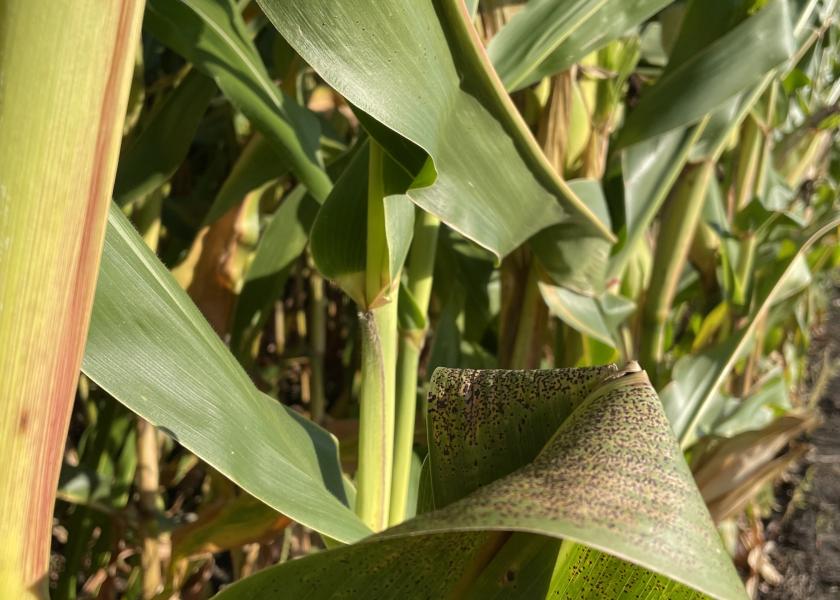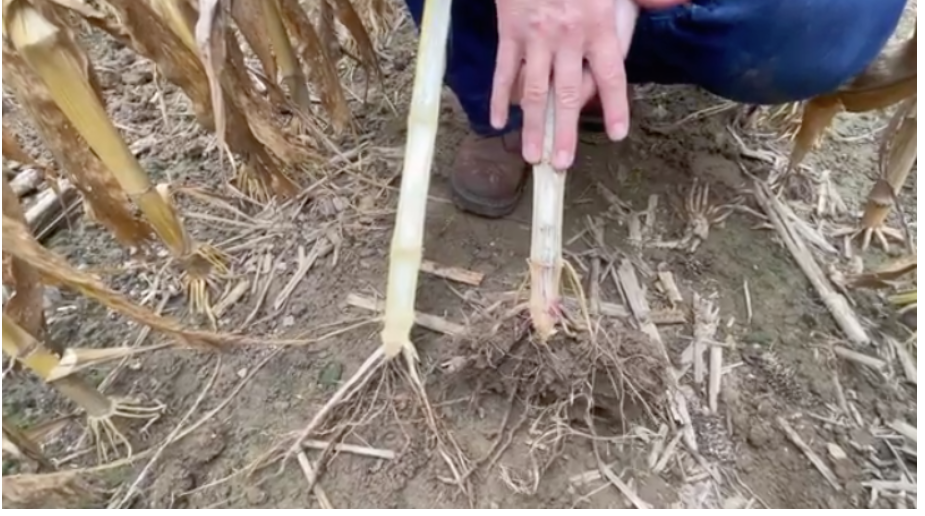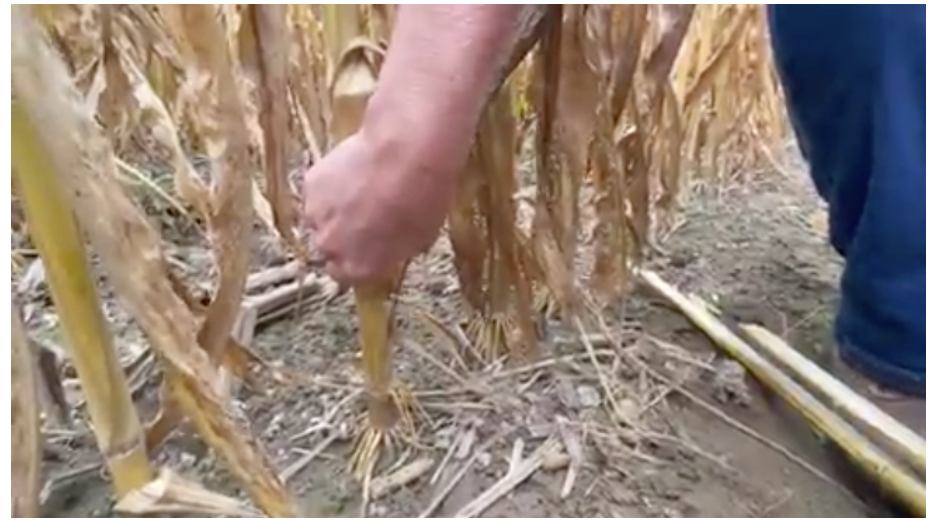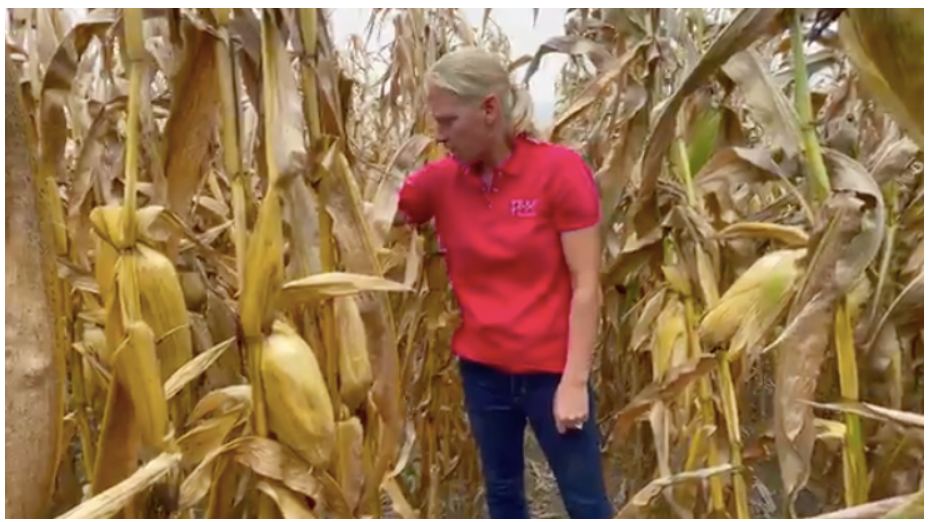Split, Pinch And Push Stalks If Tar Spot Strikes Now

The speed with which tar spot can take over and decimate a corn crop is hard to grasp unless you’ve seen the devastation happen first hand.
Vince Davis, an agronomic solutions area manager for BASF, saw the disease wreck fields of Illinois and Indiana corn in 2021. He is concerned farmers will see a repeat of that season, because the conditions in many Midwest cornfields now are similar.
“I would say the next eight to 10 days will determine whether tar spot is going to be really problematic this season or not,” he told Farm Journal’s Tyne Morgan during the Pro Farmer Crop Tour discussion Tuesday evening.
Dozens Of Tar Spot Reports Have Been Made
To date, farmers in at least 13 states have reported finding tar spot in their fields this season, according to Corn ipmPIPE, a pest mapping and forecasting system developed by the National Institute for Food and Agriculture (NIFA) and its land-grant Extension partners.
In Iowa, farmers in at least 36 counties have reported finding the disease. That’s followed by Indiana farmers in at least 29 counties who have reported the disease.
See a map of the approximate locations by state and county here.
Davis is encouraging farmers who know they have the disease inoculum in their crop to be out in fields checking the corn and keeping an eye open for any signs of tar spot as well as other foliar diseases, such as gray leaf spot.
“If you start seeing more foliar diseases, I recommend splitting stalks, and looking at the stalk quality and the health of the crown and down into the roots to determine if there is concern of stalk deterioration before we get to harvest,” he says.
Three Recommendations To Consider Prior To Harvest
Those are messages similar to what Missy Bauer, Farm Journal Associate Field Agronomist and owner of B&M Crop Consulting, Coldwater Mich., is conveying to farmers.
In 2021 she recommended three steps farmers could take to minimize yield loss from tar spot as they prepared for harvest. The same three steps apply in any year when disease is an issue:
1. Split stalks open to gauge stalk health
“When you split these stalks open this time of the year, we should still see some integrity down in these stalks,” Bauer says, showing a stalk she split open. “You can see that there's still some plant juices down in here, so it's not what we call cannibalized. If it's cannibalized, it has turned into Styrofoam appearance and there's no integrity left in here.”
2. Do the pinch test.
“Down here at the base of these plants, just take your thumb and your fingers here and try to pinch these together, and you can hear that crack, and a lot of these out here in this particular field are doing that,” she says.
3. Another key test, the push test can help farmers see which hybrids are more susceptible to falling over due to tar spot or other disease.
“You grab the plant right about the height of the ear, and I want you to extend the stalk over toward the other row a full arm length," says Bauer.
“When these are just snapping off, and they're not coming back at us, then we know we've got a greater potential for that down corn. That's not what we want to see right now at the front side of harvest.”
Bauer says the extent of the damage from tar spot is very hybrid specific, but by scouting fields and seeing which fields are more susceptible to falling down, it will help farmers prioritize their field harvest order.
For more information on addressing tar spot this season, check out these additional articles and tools:
Tar Spot Distribution map (https://corn.ipmpipe.org/tarspot/)
Tar Spotter App – https://ipcm.wisc.edu/apps/tarspotter/
Crop Protection Network – https://cropprotectionnetwork.org










